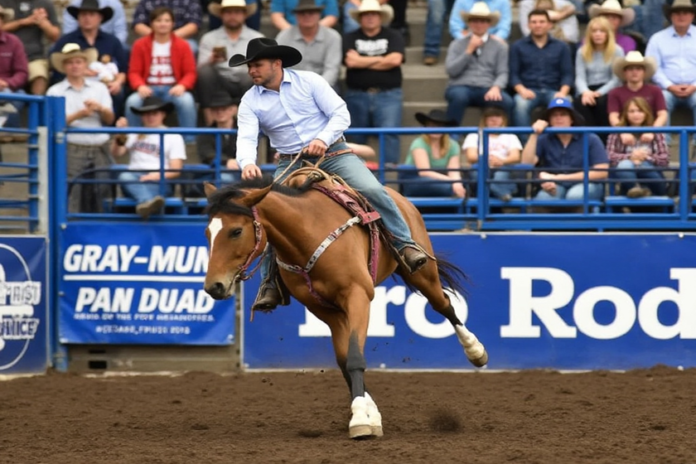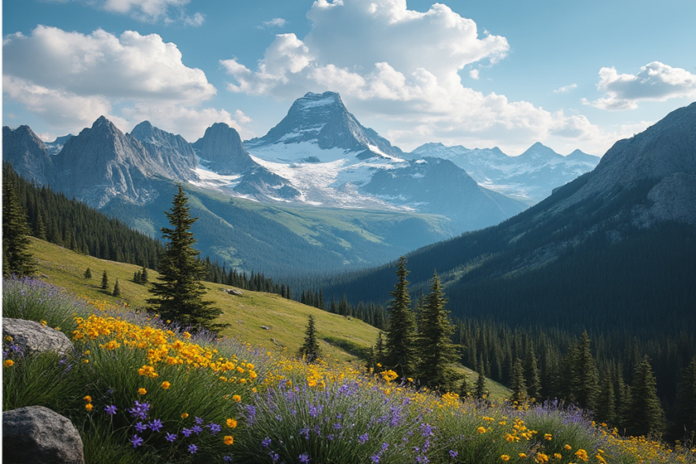Ah, the Great Falls Montana Pro Rodeo!
If you’re planning to immerse yourself in the wild, untamed spirit of the American West, here’s what you need to know:
When to Go:
Our PRCA Big Sky Pro Rodeo usually happens from July 31 through August 3. So, if you’re aiming for the heart of rodeo action, those are your dates.
Ticket Prices: You’ve got options:
Our reserved seating is usually right around $26.00. If you want to ensure you have a spot with a prime view, this might be your choice.
The general admission seats go for about $18.00 for adults. A bit more budget-friendly if you’re okay with finding your spot in the grandstands.
Our little buckaroos can usually get in for around $10.00 general admission aged 3-12, but remember, these can only be purchased at the Box Office. So, if you’re bringing the little cowpokes, plan for a stop there.
What to Expect:
You’re in for a treat with seven major rodeo events, all under the big sky of Montana. This isn’t just any rodeo; it’s part of the Montana Pro Rodeo Circuit, so expect top-tier cowboys and cowgirls showcasing their skills in bull riding, calf roping, barrel racing, and more.
Themed Nights:
Each night might have its own theme or special activities, so check if there’s something specific you want to see or participate in.
Dress Code:
While there’s no official dress code, why not embrace the spirit? Cowboy hats, boots, and maybe even a bandana could make your experience more authentic. Plus, you’ll fit right in with all of us locals.
Pro Tips:
Hydrate: Rodeos can get dusty, and you’ll be outdoors. Bring water, or buy some at the venue, but remember, no outside food or drink, including water bottles, are allowed inside.
Sun Protection: Montana sun can be intense. Sunscreen, hats, or even a small umbrella might come in handy.
Cash: While many places accept cards, having some cash for quick purchases or if you decide to indulge in some rodeo-themed merchandise can be handy.
Cultural Insight:
Rodeos are not just sports; they’re a celebration of Western heritage. You might see everything from traditional cowboy attire to modern twists on Western fashion. It’s a blend of history, sport, and community spirit.
Remember, while you’re there, soak in more than just the rodeo. Great Falls has its charm, and if you’re lucky, you might catch some other local events or fairs happening around the area at the same time. Enjoy your ride into the cowboy lifestyle, and may the spirit of the rodeo be with you!
Happy Trails
Thanks for the read.





Your Social Security Number is now more social than ever
In a surprising twist, your Social Security Number, previously thought of as sacred, has been leaked in one of the largest data breaches ever, alongside the hopes and dreams of over 3 billion people.
National Public Data, in a PR move reminiscent of ‘oops, we did it again,’ has confirmed hackers stole everything but the kitchen sink, though they’re still checking.
Experts advise everyone to freeze their credit, install 12 layers of 2-factor authentication, and maybe consider going off the grid because apparently, your personal information is just a commodity now.
On the bright side, if you were worried about identity theft, the line starts in cyberspace, where your SSN’s been hanging out with some new friends.
Please be sure to report a stolen Social Security number to the Federal Trade Commission if you think you’ve been a victim of identity theft.
Social Security numbers, names, addresses, email addresses and phone numbers were in the 2.9 billion records within a data breach. The security firm Pentester.com tool tells you if your data is involved.
Your SSN is a nine-digit identification number issued by the SSA to U.S. citizens, permanent residents, and eligible nonimmigrant workers.
It serves multiple purposes, including tracking earnings for Social Security benefits, tax reporting, and identification for various financial and governmental activities.
To apply for an SSN:
1) Complete Form SS-5
2) Provide proof of identity, age, and work authorization.
3) Submit the application at a local SSA office.
Non-citizens with work authorization or specific non-wage income may also apply.
Those ineligible for an SSN can apply for an Individual Taxpayer Identification Number (ITIN) through the IRS.